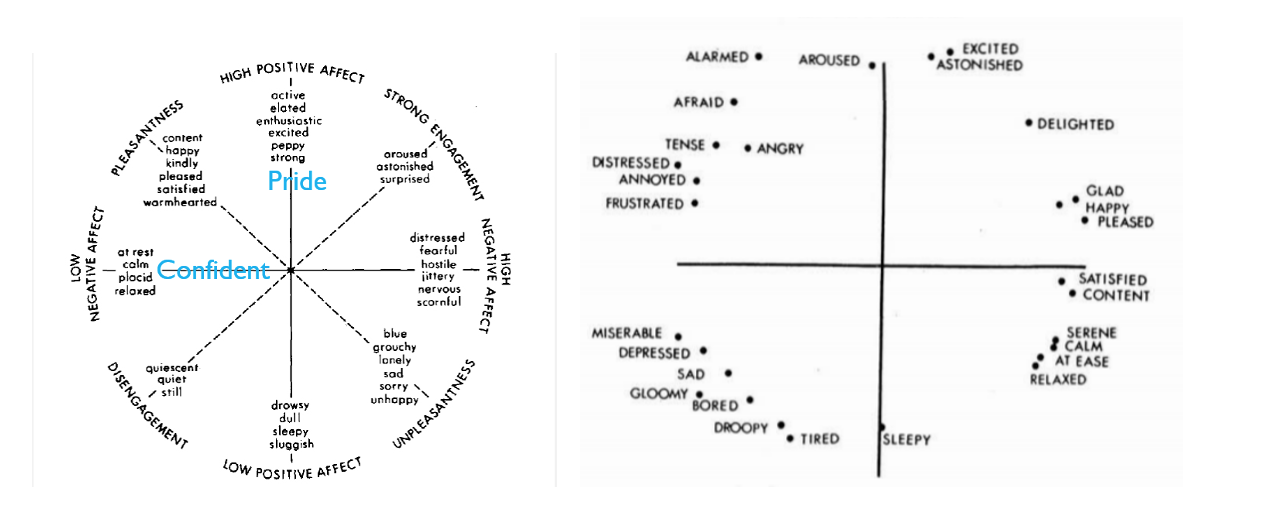Chapter 12: Pride – A Positive Self-Conscious Emotion
Subjective Feelings
Watson and Tellegen’s (1985) study found that the term pride was high in positive affect, but the word confident was low in negative affect. Russell’s (1980) model suggests that pride might be somewhere around moderately arousing, pleasant emotions as indicated by similar emotion words like satisfied and pleased.

Left Figure Reproduced from “Toward a consensual structure of mood.,” by D.T. Watson and A. Tellegen, 1985, Psychological Bulletin, 98(2), p. 221 (https://doi.org/10.1037/0033-2909.98.2.219). Copyright 1985 by the American Psychological Association.
Right Figure Reproduced from “A circumplex model of affect,” by J.A., 1980, Journal of Personality and Social Psychology, 39(6), p. 1168 (https://doi.org/10.1037/h0077714) Copyright 1980 by the American Psychological Association.

